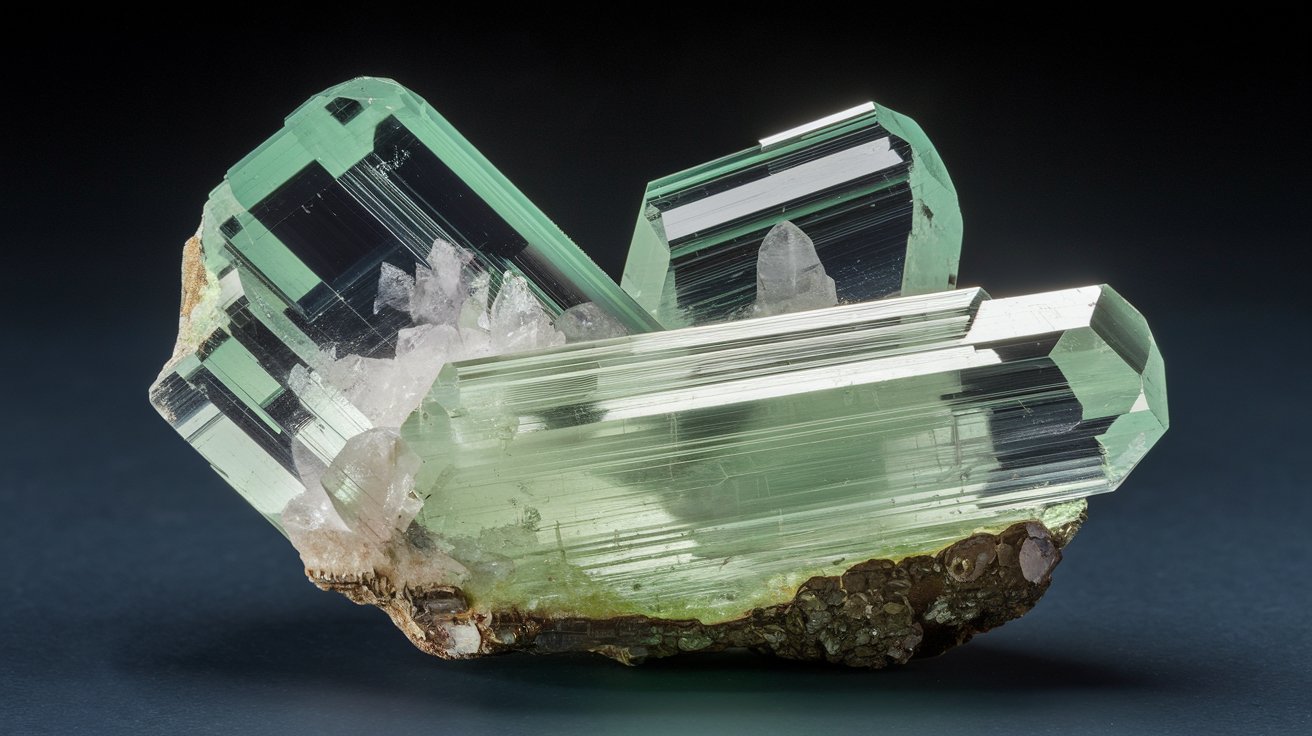
Bavenite is a fascinating mineral that often goes unnoticed. Found primarily in Italy, this mineral is part of the beryl group and boasts a unique chemical composition. Bavenite is typically white or colorless, making it easy to overlook, but its crystal structure is anything but ordinary. It forms in hydrothermal veins and is often associated with other minerals like quartz and feldspar. What makes Bavenite particularly interesting is its rarity and the specific conditions required for its formation. Whether you're a geology enthusiast or just curious about the natural world, learning about Bavenite can offer a glimpse into the complex processes that shape our planet. Ready to dive into 30 intriguing facts about this mineral? Let's get started!
Key Takeaways:
- Bavenite is a rare mineral with unique properties, named after the town of Baveno in Italy. It's used in jewelry, scientific research, and as an indicator mineral in geological surveys.
- Bavenite forms in specific geological environments like granite pegmatites and hydrothermal veins. Its rarity and fascinating properties make it a prized specimen for collectors and a subject of interest in popular culture.
What is Bavenite?
Bavenite is a rare mineral that belongs to the beryl group. It is named after the town of Baveno in Italy, where it was first discovered. This mineral is known for its unique properties and fascinating history.
- Bavenite was first discovered in 1901 in Baveno, Italy.
- It is a silicate mineral, specifically a beryllium aluminum silicate.
- The chemical formula for bavenite is Ca4Be2Al2Si9O24(OH)2.
- Bavenite typically forms in hydrothermal veins and pegmatites.
- It is often found in association with other minerals like quartz, feldspar, and beryl.
Physical Properties of Bavenite
Bavenite has distinct physical characteristics that make it identifiable. These properties include its color, hardness, and crystal structure.
- Bavenite crystals are usually white or colorless, but they can also appear pale yellow or pink.
- It has a Mohs hardness of 5.5 to 6, making it relatively hard but not as hard as quartz.
- The mineral has a vitreous to pearly luster, giving it a shiny appearance.
- Bavenite crystals are typically prismatic and can form in radial aggregates.
- It has a specific gravity of 2.7 to 2.8, which is considered average for minerals.
Geological Occurrence of Bavenite
Bavenite is not found everywhere. Its occurrence is limited to specific geological environments.
- Bavenite is primarily found in granite pegmatites, which are coarse-grained igneous rocks.
- It can also occur in hydrothermal veins, which are fractures in rocks filled with mineral-rich water.
- Significant deposits of bavenite have been found in Italy, Switzerland, and the United States.
- In the United States, bavenite has been discovered in Maine and California.
- The mineral is often associated with other rare minerals like phenakite and bertrandite.
Uses and Applications of Bavenite
While bavenite is not a widely used mineral, it has some interesting applications and uses.
- Bavenite is primarily collected by mineral enthusiasts and geologists for study and display.
- It is sometimes used in jewelry, although its rarity makes it less common.
- The mineral's unique properties make it a subject of interest in scientific research.
- Bavenite can be used as an indicator mineral in geological surveys to locate beryllium-rich deposits.
- It has potential applications in the field of materials science due to its unique crystal structure.
Interesting Facts about Bavenite
Bavenite has some fascinating aspects that make it a mineral worth knowing about.
- The name "bavenite" honors the town of Baveno, Italy, where it was first discovered.
- Bavenite is part of the beryl group, which includes other well-known minerals like emerald and aquamarine.
- The mineral's formation process involves the alteration of beryl in the presence of calcium-rich fluids.
- Bavenite crystals can sometimes exhibit fluorescence under ultraviolet light.
- The mineral's rarity makes it a prized specimen for collectors and museums.
Bavenite in Popular Culture
While not as famous as some other minerals, bavenite has made its mark in popular culture.
- Bavenite has been featured in various mineralogical publications and journals.
- It is often displayed in natural history museums around the world.
- The mineral has appeared in educational materials and textbooks on geology and mineralogy.
- Bavenite has been mentioned in scientific documentaries and television programs about minerals.
- It continues to be a subject of fascination for both amateur and professional mineralogists.
Bavenite's Fascinating World
Bavenite, a rare mineral, holds a unique place in geology. Found mainly in granite pegmatites, this mineral's distinct crystal structure and composition make it a subject of interest for collectors and scientists alike. Its name honors the Italian locality of Baveno, where it was first discovered. Bavenite's white to pale yellow color, coupled with its fibrous appearance, sets it apart from other minerals.
Understanding bavenite's formation helps geologists learn more about Earth's processes. Its presence often indicates the conditions under which the surrounding rocks formed. For collectors, bavenite's rarity adds significant value to their collections.
In essence, bavenite isn't just a mineral; it's a window into the geological history of our planet. Whether you're a scientist, collector, or just curious, bavenite offers a glimpse into the intricate and fascinating world of minerals.
Frequently Asked Questions
Was this page helpful?
Our commitment to delivering trustworthy and engaging content is at the heart of what we do. Each fact on our site is contributed by real users like you, bringing a wealth of diverse insights and information. To ensure the highest standards of accuracy and reliability, our dedicated editors meticulously review each submission. This process guarantees that the facts we share are not only fascinating but also credible. Trust in our commitment to quality and authenticity as you explore and learn with us.


